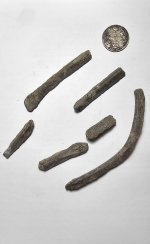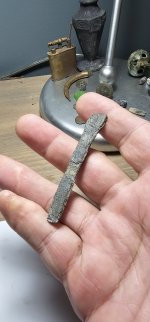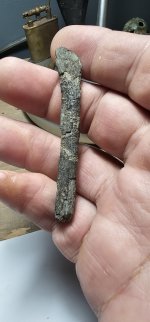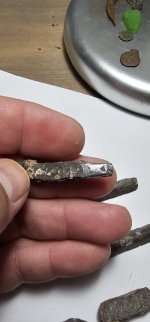Chirp Digger
Greenie
To begin, I am relatively new to metal detecting... when I found these bars, I was even newer so I really wasn't taking note of details as I do now... a whole 6 months later. I live in Prince Edward Island, Canada's smallest province, and we are surrounded by shipwrecks and a million stories.
I am wondering if anyone here has an opinion or experience that matches the research I have done so far. I initially thought these bars were lead. On beaches here there are ridiculous amounts of small lead bits, some raw and unrecognizable, some are fishing weights. I have since confirmed that they are silver.
I added an old quarter to one picture for scale, and a picture of a small bar I sacrificed to do some testing on.
Any thoughts?
I am wondering if anyone here has an opinion or experience that matches the research I have done so far. I initially thought these bars were lead. On beaches here there are ridiculous amounts of small lead bits, some raw and unrecognizable, some are fishing weights. I have since confirmed that they are silver.
I added an old quarter to one picture for scale, and a picture of a small bar I sacrificed to do some testing on.
Any thoughts?











